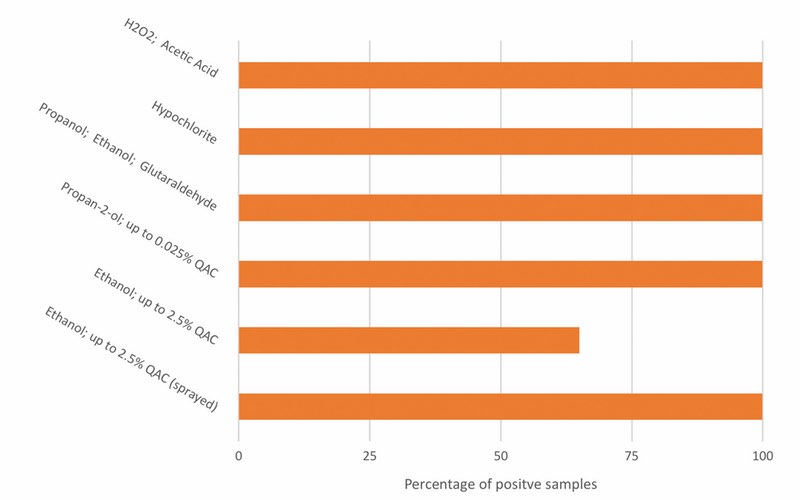Swabbing is a common method for environmental monitoring in aseptic filling lines for pharmaceuticals. The ICR Swab is designed as a presence-absence test of microorganisms on dry, hard-to-access surfaces in grade A cleanrooms or isolators. The all-in-one design of the ICR Swab minimises the risk of cross-contamination caused by handling.
Residues of disinfectants with different active ingredients may be left behind on dry sanitised surfaces. The risk of microorganism inhibition depends on the concentration of the active ingredients left behind on the surface.
In general, hydrogen peroxide, pure alcohols and oxidative disinfectants do not tend to leave growth inhibiting residues on the dried surface, but stable ingredients such as quaternary ammonium compounds, aldehydes, and phenols will be present even after drying.
The Soybean-Casein Digest Broth (SCDB) within the ICR Swab is supplemented with polysorbate 80 and lecithin acting as an efficient neutraliser against most of the above mentioned stable active ingredients.
Merck KGaA, Darmstadt, Germany has performed several tests to confirm this assumption and to prove the neutralisations efficiency of the growth medium within the ICR Swab. The test results indicate the following conclusions:
- Oxidative disinfectants such as hydrogen peroxide and hypochlorite do not leave growth inhibiting residues on sanitised and dried surfaces, so no neutraliser is required.
- The ICR Swab growth medium shows efficient neutralisations towards all tested disinfectants including stable active ingredients of disinfectants such as aldehydes, quaternary ammonium compounds (QAC) and phenols.
- Even small titers of less than 30 CFU of S. aureus ATCC 6538 P. aeruginosa (ATCC 9027), B. subtilis (ATCC 6633), C. albicans (ATCC 10231) and A. brasiliensis (ATCC 16404) grow well in the presence of disinfectant residues retrieved from swabbed surfaces.
- aureus (ATCC 6538) is the most sensitive among the test organisms and is inhibited at the highest concentration of quaternary ammonium compounds on the surface. Reducing the QAC residues on the surface by following the recommendation of the disinfectant supplier by spraying the disinfectant results in sufficient neutralisations efficiency.
- Prolonged incubation up to six days improves the recovery of S. aureus injured by high concentrations of quaternary ammonium compounds.

Detection of low levels of S. aureus (ATCC 6538 < 30 CFU) in the presence of residues of different disinfectants after growth in SCDB with neutralisers (ICR Swab Medium)
N.B. This article is featured in the June 2019 issue of Cleanroom Technology. The digital edition is available online.
